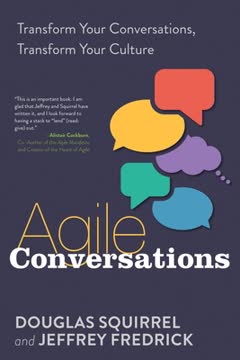Key Takeaways
1. Conversations are the Core of Successful Transformations
Our way to make this fundamental shift is to turn to the most human of abilities: the conversation.
People-centric shift. Digital transformations frequently fail, not due to flawed processes or tools, but because organizations neglect to fundamentally change how people interact and collaborate. The true leverage for success lies in harnessing humanity's unique conversational abilities, fostering the right environment for practices like Agile, Lean, and DevOps to thrive. Without this human element, even well-intentioned transformations devolve into bureaucratic rituals.
Beyond mechanics. The traditional "software factory" model, rooted in Taylorism, treated individuals as interchangeable parts, limiting communication to top-down commands. This document-driven approach, while seemingly logical, proved disastrously flawed, leading to widespread project failures. The shift towards people-centric methodologies like Agile recognized that human interaction, transparency, and curiosity are paramount, not just processes and tools.
Cultural glue. Conversations are the "lost instruction manual" for effective Agile. They are the "cultural glue" that binds an organization, enabling strong relationships and information flow. By transforming conversations, teams can overcome ingrained frustrations, unlock "conversational superpowers," and achieve results faster than imagined, turning cultural problems into opportunities for growth and high performance.
2. The "Software Factory" Mindset Undermines Human Potential
To advance, organizations will need to tap into the unique human power of conversations, overcoming their cognitive biases by learning to have difficult but productive conversations.
Taylorism's legacy. The "software factory" paradigm, heavily influenced by Frederick Winslow Taylor's scientific management, envisioned workers as replaceable parts on an assembly line, following rigid, documented processes. This dehumanizing approach, prevalent in the 1990s, led to the "software crisis" of widespread project failures, as it stifled creativity, collaboration, and critical thinking among software professionals.
Feature factory trap. Despite the rise of Agile, Lean, and DevOps, many organizations fall into the "feature factory" trap. They adopt the superficial practices—standups, WIP limits, new tools—but retain the underlying mechanistic mindset. This results in:
- Disconnected development
- Barriers to collaboration
- Endless handoffs
- Painfully slow progress
- Often, the wrong software being built
Ignoring human nature. The core issue is ignoring that humans are "non-linear, first-order components" in software development. Expecting them to act as predictable machines, rather than communicating, variable, and initiative-taking beings, dooms transformations. True progress requires recognizing and leveraging the complex, human dynamics that conversations enable.
3. Master the Four Rs for Conversational Improvement
We apply the Four Rs—Record, Reflect, Revise, and Role Play—as our preferred way of learning from conversations.
Structured learning. Improving conversational skills isn't intuitive; it requires deliberate practice. The Four Rs provide a powerful, mechanical method to analyze and enhance interactions. This structured approach helps individuals gain distance from their own conversations, making it easier to identify issues and opportunities for improvement.
The Four Rs in action:
- Record: Write down the conversation, including both spoken words (right column) and unexpressed thoughts/feelings (left column). This externalizes internal dialogue.
- Reflect: Analyze the recorded conversation for curiosity (Question Fraction), transparency (unexpressed thoughts), and personal patterns (triggers, tells, twitches). This reveals the gap between espoused theory and theory-in-use.
- Revise: Rewrite the conversation to incorporate desired changes, aiming for more genuine questions, greater transparency, and productive responses to triggers. This is an iterative process, often requiring multiple attempts.
- Role Play: Practice the revised dialogue aloud with a friend or even a mirror. This helps make new behaviors feel natural and allows for "role reversal" to gain empathy and further refine the interaction.
Accelerated growth. Consistently applying the Four Rs to a series of conversations dramatically increases the pace and volume of learning. It transforms every interaction into a valuable opportunity for skill development, leading to substantial practical gains in communication and collaboration.
4. Build Trust as the Foundation for Collaboration
If I say I trust you, I mean that I have expectations about what you will do that have been met before and that I believe will be met again.
Aligned stories. Trust is fundamentally about having aligned stories with others – a shared understanding of expectations, behaviors, and motives. When stories are misaligned, like Ptolemy, Newton, and Einstein trying to build a spaceship, no amount of process or tooling will lead to success. This misalignment breeds cynicism and prevents effective cooperation.
Vulnerability and predictability. Building trust requires both vulnerability and predictability.
- Vulnerability: Being transparent about your thoughts, feelings, and uncertainties, even if it makes you appear less rational or knowledgeable. Using phrases like "The story I'm telling myself is..." helps share internal reasoning without threatening others.
- Predictability: Consistently aligning your actions with your stated intentions. Small, visible steps, even seemingly unrelated ones (like a manager fixing a printer), can establish a reputation for reliability and build confidence over time.
TDD for People. The "Ladder of Inference" (Chris Argyris) provides a structured approach for the Trust Conversation. Like Test-Driven Development, you ascend the ladder slowly, rung by rung (observations, data selection, meanings, assumptions, conclusions, beliefs, actions), asking genuine questions at each step. When a "test fails" (a misalignment is exposed), you "refactor" your understanding and try again, building confidence and aligning stories in real-time.
5. Address Fear to Unlock Psychological Safety
A team with this characteristic has a “climate of openness,” readily and fearlessly discussing problems and trying experiments to address them.
Ug's legacy. Humans are hardwired for fear, a survival instinct that often defaults to caution when confronted with the unknown. While useful in ancient forests, this "Legacy of Ug" paralyzes modern teams, inhibiting creativity and cooperation. It leads to delaying releases, rejecting new features, and missing opportunities to learn and iterate.
Normalization of deviance. Fear often manifests as "normalization of deviance," where unsafe practices become accepted norms over time because no immediate catastrophe occurs. Examples include:
- Ignoring flickering automated tests
- Accepting constant system alerts as "normal"
- Regularly extending sprint deadlines
This phenomenon, exacerbated by pluralistic ignorance (where individuals assume others are comfortable because no one speaks up), can lead to disastrous outcomes.
Coherence busting. To prepare for the Fear Conversation, actively challenge your own assumptions and coherent stories using "Coherence Busting." This involves consciously generating wildly implausible alternative explanations for observations, activating System 2 thinking to overcome System 1's "what you see is all there is" bias. This broadens your perspective and helps uncover hidden fears. The "Fear Chart" then helps make these fears visible, prioritize them, and jointly identify concrete mitigations, fostering psychological safety and enabling courageous action.
6. Jointly Design a Shared "Why" for True Commitment
Jointly creating a purpose means that a chief architect can concentrate on pointing to the cloud as the next evolutionary step, that a tech lead can get her whole team behind the quarterly goal, and that a tester can decide with confidence which component she should automate tests for next.
Beyond imposition. While a compelling "Why" is crucial for success, simply imposing it from above is unlikely to work. Without foundational trust and mitigated fears, a team won't genuinely believe in or commit to a purpose. True commitment and self-organization stem from "Joint Design," where everyone involved actively participates in shaping the "Why."
Interests, not positions. Productive "Why" conversations often get stuck in debates over "positions" (e.g., "We must release feature X"). The key is to shift focus to underlying "interests" (e.g., "Keeping up with competitors," "Delivering on customer promises"). By identifying and sharing these deeper motivations, teams can uncover common ground and find creative solutions that satisfy everyone's core needs.
Advocacy and inquiry. Skillful Joint Design combines:
- Advocacy: Transparently stating your own views and reasoning.
- Inquiry: Genuinely asking questions to understand others' perspectives and the reasoning behind their positions.
This avoids the "Perry Mason Trap" of asking leading questions without revealing your own agenda, which can breed mistrust. By being inclusive, inviting opposing views, timeboxing discussions, and establishing clear decision-making rules, teams can collaboratively define a motivating "Why" that garners internal commitment.
7. Clarify Commitments for Effective Execution
A commitment should be more than a promise—something you make with conviction and knowledge, and execute with creativity and skill.
Commitment vs. compliance. Effective execution hinges on genuine commitment, not mere compliance. Compliance is simply following orders, often leading to superficial effort and failure when challenges arise. Commitment, however, involves full engagement, ownership, and a shared understanding of what "done" truly means, enabling teams to navigate complexity and deliver real value.
Agreeing on meaning. A common pitfall in commitments is miscommunication about key terms. Jeffrey's "done" for a login screen meant "usable in production," while the developers' "done" meant "code is live and works for test cases." To avoid this, explicitly discuss and align on the meaning of important words and concepts, using specific examples or techniques like Specification by Example. This ensures everyone shares the same understanding of the commitment.
The Walking Skeleton. The "Walking Skeleton" technique provides a powerful framework for making and delivering commitments. It involves building a minimal, end-to-end functional version of a system that "walks" (performs a function) and has the "skeleton" (structure) of the final product. This allows teams to:
- Make small, immediately deliverable commitments.
- Show tangible progress early and continuously.
- Exercise all core components of the system.
- Build confidence and gather feedback incrementally, leading to more reliable and predictable delivery.
8. Embrace Accountability for Continuous Learning
We mean simply being obligated to render an account of what you have done and why.
Beyond punishment. Accountability is often misconstrued as punishment for failure, rooted in medieval practices of revenue collection. However, true accountability is the obligation to explain one's actions and reasoning, whether for successes, failures, or neutral results. This definition is crucial for self-organizing teams, empowering individuals to make decisions while transparently sharing their intent and outcomes.
Theory Y mindset. Effective accountability thrives in a Theory Y culture, which assumes people are inherently motivated, want to take ownership, and seek to do well. This contrasts sharply with Theory X, which views workers as lazy and requiring constant supervision. Embracing Theory Y means:
- Trusting individuals to get the job done.
- Empowering teams to make decisions.
- Believing everyone is doing their best.
This fosters an environment where individuals are eager to share their progress and learn from feedback, rather than hiding problems.
Directed Opportunism. Stephen Bungay's "Directed Opportunism" provides a structured protocol for accountability:
- Briefing: A leader communicates the intended outcome, constraints, and freedoms for a task. This clarifies priorities and trade-offs.
- Back Briefing: The executing party explains their plan to achieve the outcome, their reasoning, and confirms alignment with the original briefing.
This two-way communication closes knowledge and alignment gaps, ensuring shared understanding and enabling adaptation in the face of "friction" (unexpected events). Radiating intent broadly through planning sessions, information radiators, retrospectives, and demonstrations further enhances transparency and learning.
9. Overcome Cognitive Biases for Productive Dialogue
Along with our amazing powers of conversation, we also come equipped with pre-existing, built-in flaws—our so-called cognitive biases.
Innate flaws. While human language enables collaboration at tremendous scales, our inherent cognitive biases often undermine it. These unconscious shortcuts, like the false-consensus effect (believing our views are commonly held) or naive realism (believing we see reality without bias), inhibit transparency and curiosity. They make us less likely to share our reasoning or inquire about others', leading to misunderstandings and unproductive conflict.
Invisible gaps. Chris Argyris's work highlights the "theory-in-use" versus "espoused theory" gap. We might claim to value collaboration and transparency (espoused theory), but in threatening situations, our "defensive reasoning" (theory-in-use) leads us to act unilaterally, suppress negative feelings, and avoid genuine inquiry. This invisible gap prevents productive conflict and corrodes relationships, making cultural transformation difficult.
Conscious effort. Overcoming these biases requires conscious effort and "difficult emotional work." It means recognizing our own contributions to unproductive dynamics and being willing to challenge our instinctive reactions. Techniques like Coherence Busting (generating alternative explanations for observations) and combining advocacy with inquiry (stating your view while genuinely seeking others') are vital tools to counteract these biases and foster mutual learning.
10. Continuous Practice is Essential for Conversational Mastery
Even after studying these methods for over ten years, both of us continue to make and discover new mistakes, which also allows us to learn new skills and invent new techniques.
An unending journey. Mastering conversational skills is not a destination but a continuous journey. The Five Conversations—Trust, Fear, Why, Commitment, and Accountability—are not one-time events but ongoing processes that require constant attention and adaptation as teams, individuals, and environments evolve. Just like playing an instrument or a sport, consistent practice is the only path to greater grace, style, and effectiveness.
Learning from failure. Even experienced practitioners will stumble and have "acrimonious discussions." These "failed conversations," though painful, offer the greatest opportunities for learning and developing crucial skills. The key is to embrace these setbacks as valuable feedback, applying the Four Rs (Record, Reflect, Revise, Role Play) to extract insights and refine your approach for future interactions.
The power of a learning group. The most impactful way to accelerate conversational mastery is through a dedicated learning group. Other people, unburdened by your own cognitive biases, can more easily spot your blind spots and offer alternative perspectives. A learning group provides a safe space for:
- Deliberate practice of techniques.
- Immediate, constructive feedback.
- Joint analysis of real-world conversations.
- Mutual support and encouragement on the challenging path of conversational transformation.
Last updated:
Review Summary
Agile Conversations receives high praise for its practical approach to improving communication in software development teams. Readers appreciate its focus on trust, fear, purpose, commitment, and accountability. The book offers valuable tools and examples for managers and team members to enhance workplace dynamics. While some find certain sections less relevant or repetitive, most reviewers consider it a must-read for those seeking to improve team productivity and organizational culture. The book's emphasis on conversation techniques and their impact on Agile transformations is particularly well-received.
Similar Books
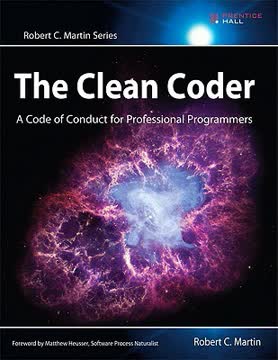




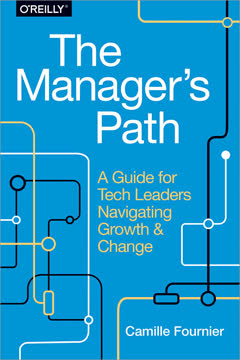
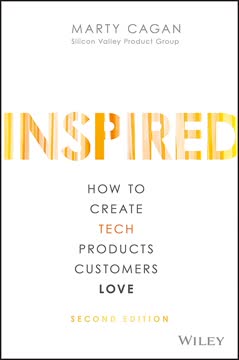
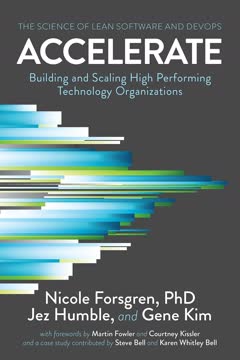
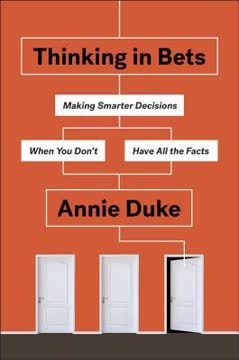
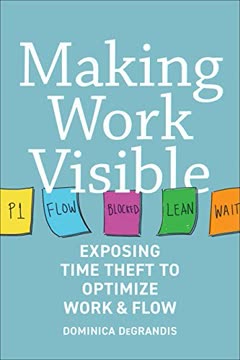
Download PDF
Download EPUB
.epub digital book format is ideal for reading ebooks on phones, tablets, and e-readers.
